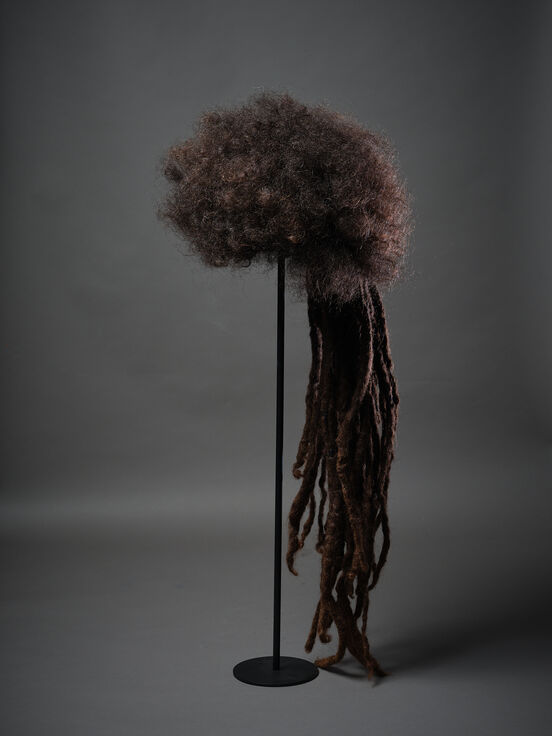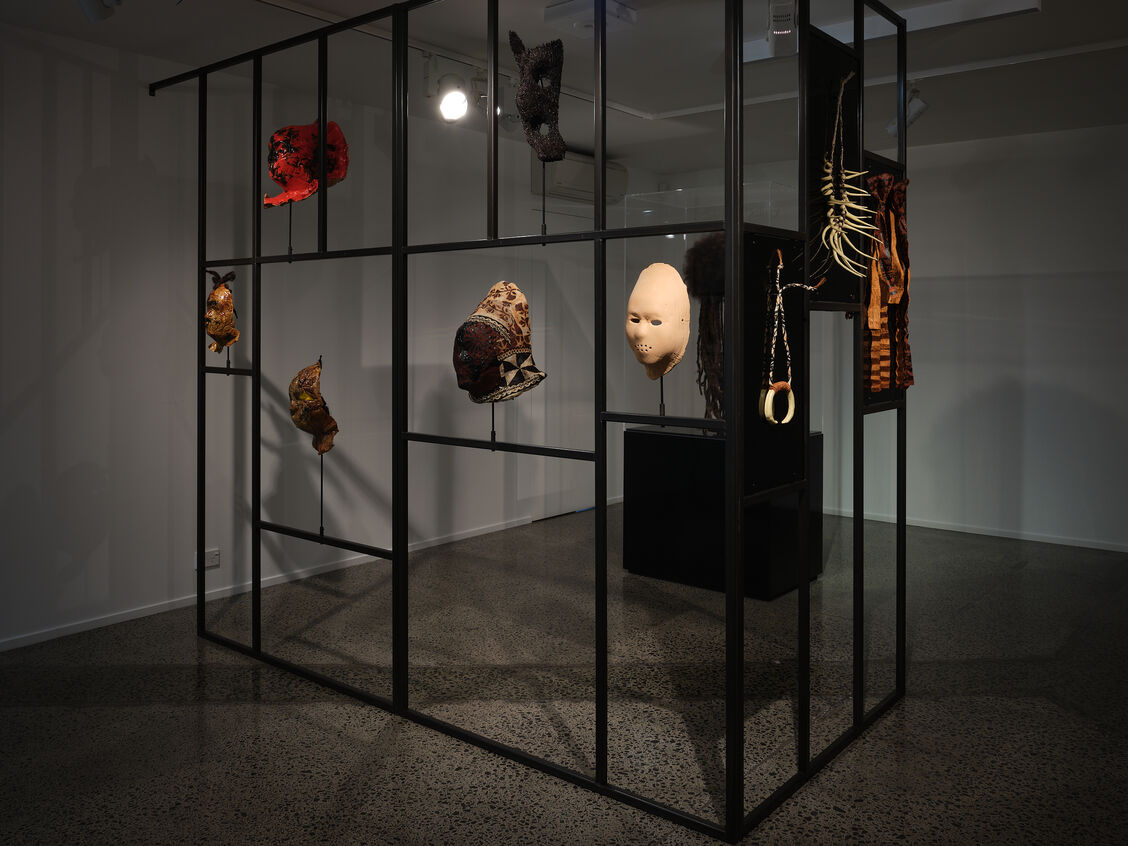Objectspace Tours: The Ulumate Project by Na Tolu: Joana Monolagi, Ole Maiava, Daren Kamali
After visiting Fiji and Hawaii, Na Tolu's project will reach Pātaka Art + Museum in June
Ole Maiava and Daren Kamali of Na Tolu are heading abroad to share works from The Ulumate Project in Fiji and Hawaii, before the whole exhibition tours to Pātaka Art + Museum in June.
Ulumate or ‘dead head’ describes the ancient practice of human hair wig-making by iTaukei (Indigenous Fijians), inactive in Fiji for two centuries.
Ulumate was traditionally observed during a time of mourning, when the drau-ni-ulu (hair) was cut and made into a wig, then worn until the hair beneath grew back. In pre-Christian Fiji, ulu cavu (hair wigs) were also made for warfare and worship.
Post-colonisation, Qita (selected men) with wau (weapons) looked after the plantations where wi (Brazilian plums) and duruka (the edible insides of reeds) grew. A Qita may wear the ulu cavu with a mask of his choice or white bark cloth up to his eyes, named Mata Vula (white face), alongside leaves on his body. It was forbidden to call him by his name or talk to him while he was in costume and at work. The Qita were responsible for protecting the village plantation and the distribution of crops after allocating the chief and his family’s share.
The impact of colonization has meant ulumate traditions have become dormant, with surviving ulu cavu only existing in museum collections and historic photographs. Na Tolu, an artist collective formed by Joana Monolagi, Ole Maiava and Daren Kamali, has been revitalising the practice of ulumate through research informed by institutional collections. Their investigation has resulted in the creation of the first modern-day mourning wig, on display as part of The Ulumate Project.
Na Tolu’s journey investigating and reviving these ancient making practices began eight years ago. In 2014, while working at Tāmaki Paenga Hira Auckland War Memorial Museum alongside Ole, Daren encountered the ulu cavu in the museum’s collection. Concurrently, he had decided to cut his hair after growing it for 17 years. The intersection of these events led Daren and Ole to begin the journey that has led to the revival of ulumate traditions and the only ulu cavu to be created in 200 years.
In 2018, Joana Monolagi attended Daren’s second hair cutting ceremony and it was at this time that she offered to make the contemporary ulu cavu wig. Joana is an iTaukai (Fijian) knowledge holder and heritage artist, who has supported Daren and Ole’s research into iTaukei arts exemplifying ways in which to incorporate traditional ways of working with materials from Fiji and modern fabrics.
In 2016 and 2019, Daren and Ole completed research trips to examine ulumate in collections at Museum of Archaeology and Anthropology, University of Cambridge, The Horniman Public Museum and Public Park Trust and Royal Museums Greenwich, National Maritime Museum. Handling and studying ulumate in these collections gave profound understanding of how ulu cavu were made, enabling Joana to undertake the task of creating the ulu cavu using Daren’s hair. The encounters with historic ulumate also influenced the accompanying works in this exhibition.
Each mask featured in The Ulumate Project is in direct response to evocations felt when in the presence of ulumate held in museum collections, creating connections back to the ulu cavu and iTaukei ancestors.
These connections have been deepened through the reimagining and reposing of historic photographs of iTaukei exhibiting as photographs. These photographs feature the members of Na Tolu with adornment pieces and masi made by Monolagi alongside masks.
Through this research and the body of work Na Tolu have created, the artists have ensured the traditions of iTaukei are not forgotten.

Na Tolu at Objectspace, December 2022, photograph by Zoe Black.

Na Tolu, Ulu cavu, 2021, photograph by Samuel Hartnett

Installation view of Na Tolu: Joana Monolagi, Ole Maiava, Daren Kamali, The Ulumate Project, 3 Dec 2022–26 Feb 2023 at Objectspace, photograph by Samuel Hartnett